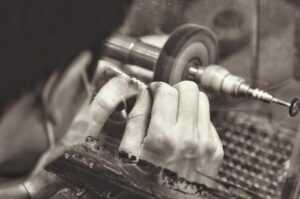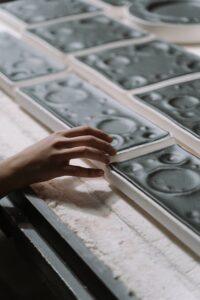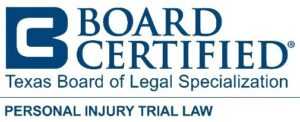Hurt By Bad Product
We buy items expecting that they will make our lives better. We don’t expect them to hurt us. We have faith in their ability to keep us secure. But unreasonably dangerous products happen more often than they should. Thousands of people are wounded or killed each year because of defective or damaging items ranging from automobiles and toys for children to building materials and medical equipment.
If a defective product caused you injury, you may be able to sue the product’s designer or manufacturer. That is a type of claim we routinely handle. You and your family cope with the agony and burden of a defective device. We’ll use our resources and knowledge in complicated product liability disputes to help you and your loved ones get the justice you deserve.
The product liability lawyers at Willis Law Firm are well-versed in the laws protecting people from the danger caused by defective products. When a person is injured because of a faulty product, multiple parties may be held accountable for distributing a product that they knew or should have known was dangerous to consumers. Call us at 713-654-4040 or 1-800-883-9858 to discuss your potential defective product claim.
As the defective product goes from the producer to the customer, the court will decide the liability of those participating in the chain of commerce. A person or organization can be held accountable for a wide range of items, from defective medical devices to food poisoning.
Defective Products Cause Injuries
Our product liability lawyers have successfully represented individuals and their families who have been injured by unsafe and defective products at work, home, or on the road. Our injury attorneys handle a wide range of product liability and defect cases, including but not limited to:
- Medical Devices, Pharmaceuticals, and Chemicals: surgical implants, cosmetics, dietary supplements, pharmaceuticals, and other potentially hazardous substances.
- Design, Hardware, and Safety Systems for Highways: Roadway lighting and striping, as well as guardrails, signs, and signals
- Unsafe Food and beverage items include foods and supplements, animal feed, water filtration, and other beverages.
- Automobile defects: seat belts, airbags, tires, roof crush, door latch, stability, park-to-reverse, keyless ignition systems, vehicle fires, and handling/rollovers, fuel and emissions systems.
- Products for Children: Car seats and booster seats, newborn sleepers, toys, and playground equipment.
- Power equipment, hand tools, furnishings, building materials, electrical wiring, and heavy machinery are all used in the home and construction industry.
- Kitchen appliances like pressure cookers.
What Is Product Liability and How Does It Affect Me?
Product liability is the injury caused by the use of a device that is harmful because of its design, production, or marketing. Products include everything from the clothing on your back to the equipment in your house to the food in your refrigerator. The main types of product liability are illustrated by the three categories below:
- Design Flaws: These defects come from a product’s defective design, which is that the blueprint used to develop the product was unnecessarily harmful. Examples of design flaws include a toy that is easily broken into little bits, causing a choking hazard. It could also include a car that is prone to accidents because it has a malfunctioning part, a laptop that shocks users when opened or overheats excessively when used, or a lawnmower’s blade detaches when spun too fast.
- Manufacturing Defects: These are flaws that happen during the manufacturing of a product. Although the design was generally safe, certain production errors occurred. This usually involves a product that was made with poor materials. Examples could include a tainted batch of biscuits, a vehicle made or repaired with substandard parts, a cracked coffee pot or flask that leaks hot liquid, or a lamp with a frayed cord.
- Marketing Flaws and Inadequate Warnings: These injuries are not the result of a flaw in the device itself. Rather, the maker and vendor did not appropriately notify you about the hazards involved. These can include medication that does not warn of possible dangers when used with other drugs, a stove with knobs that get too hot to touch when the temperature hits a certain level, or a bonding agent that causes significant chemical burns on skin.
What Does Product Liability Mean?
Producers of goods must pay the costs if they put dangerous or defective products in the hands of consumers. Our ordinary expectations must be met. A defective product does not meet our expectations. When a customer is hurt by a product, they have legal rights. A product liability lawsuit is based on a faulty product that causes an injury because of its defect.
What Must Be Proven in a Product Liability Claim?
A few factors must be demonstrated to achieve a successful product liability claim. Duty, defect, causation, and harm are these criteria.
- Duty: The vendor or manufacturer of the goods owes the individual a responsibility to provide them with a safe product.
- Defect: To prove that the product was faulty in any way, the plaintiff must show that it was defective in some way.
- Harm: The plaintiff must have been injured as a result of the defect to be considered harmful.
- Causation: To establish causation, the plaintiff must show that the product defect was the proximate cause of the damage.
It is critical to remember that all of these factors must be established, otherwise, your case may be jeopardized.
What Theories of Liability Are Available For Product Liability Cases?
There is a strategy applied by our injury lawyers when it comes to product liability litigation. The first stage of evaluating a product defect claim is selecting the theory of liability you will claim. These are some of the concepts:
- Negligence Theory: This includes proof that the manufacturer’s owed you a duty to make a safe product, that they failed to do so, and that the failure caused the claimed injury.
- Strict Liability Theory: This enables a person to file a product liability claim against the person who sold the product to the user, even if that person had nothing to do with the flaw that caused the damage.
- Breach of Warranty Theory: This emerges when the original manufacturer offers a warranty for a device that causes you harm. You would file a breach of warranty lawsuit in these circumstances.
Can I Recover Damages If I Contributed To The Accident?
Yes, but your award will be reduced. If you are 10% liable for your injuries, the claim’s value drops by the same percentage. As long as you are not more than 50% responsible, you may still recover for the injury from the defective product.
Who Is Responsible If A Product Is Defective?
A person hurt by a dangerous or defective product may have legal grounds to sue anybody involved in its supply chain. Multiple parties, depending on the circumstances and type of the defect, may be held liable under product liability law, including the following:
- Designer
- Retailer
- Packaging Firm
- Manufacturer
- Manufacturer of spare parts
- Assembly Manufacturer
- Wholesaler
Multiple parties may have liability for product-related damage, including the seller, the distributor, the manufacturer, or the product’s designer. It all turns on what caused the flaw in the first place, in addition to what caused your injury. Determining how the defect occurred in the first place may appear formidable, but the type of defect will help narrow it down.
To show a causal link between an injury and a defective product, product defect cases require a keen mastery to assess an injury and prove a causal connection with the device. Manufacturers have advanced knowledge of design, production, and warning problems. There is frequently a time gap between early understanding and public reporting of the problem. When a manufacturer refuses to admit a fault, it might be difficult to convince the judge that the defect exists. That’s only one of the difficulties in dealing with a complicated product defect lawsuit, but it’s one that Willis Law Firm has conquered.
What Kinds of Compensation Can You Get in a Product Liability Case?
Your product liability lawsuit should cover all losses you’ve suffered. This can include financial and non-financial losses:
- Anguish in the mind
- Damage to property
- Loss of previous earnings, wage loss in the future, or diminished earning ability
- Medical bills from the past
- Medical costs that will be incurred in the future for treatment and rehabilitation
- Scarring and disfigurement
- Suffering and physical pain
What Should I Do If I’m Hurt by a Dangerous or Defective Product?
If you’ve been hurt by a dangerous or faulty product, be sure you have all of your facts straight by using the checklist below:
- Seek medical help right away.
- If you can safely retain the product in your possession, keep it.
- Do not modify or repair the product.
- Gather any product-related documents you have, such as purchase records, technical information, owner’s manuals, and user instructions. Take pictures of it.
- Schedule an appointment with one of our injury attorneys for defective and unsafe as soon as possible.
- Other than your lawyer, do not discuss the case with anybody else.
The following are some of the most important characteristics of a successful product liability lawsuit:
- Product retrieval: In a product defect case, the faulty product is the most important piece of evidence. Our experts have a track record of successfully collecting things for professional non-destructive testing.
- Photographs, sketches, and documentation of the information necessary to build trial evidence were taken by our investigator on the scene. They’ve investigated incidents in residential, commercial, and construction sites, as well as public transit stations, street junctions, and other locations.
- Records of machine/equipment maintenance: We photograph industrial machinery and analyze their maintenance. Records often include fire reports, police accident reports, and other official data.
- Statements of witnesses: Our client’s understandings of events are verified by witnesses. Observers are often aware of things that our clients were unable to detect due to their wounds. We get information from witnesses as soon as possible before they forget what they saw. We investigate incidents in commercial, residential, and construction sites, as well as public transit stations, street junctions, and other locations.
- Data and reports from the government: Injury and cause statistics are compiled by government organizations such as CDC, CPSC, OSHA, and NHSTA. Individual consumer complaints are recorded by the CPSC. Serious work-related injuries are investigated by OSHA. Equipment faults and related occupational safety injuries are documented in its employer citations and inquiry reports. We get OSHA investigative reports.
Defective Products are Unreasonably Dangerous
A faulty product isn’t only a waste of money, it can put your life in peril. The following are some of the most common injuries caused by defective products:
- Amputation of a limb Injuries to the spinal cord
- Burns caused by chemicals and heat
- Internal hemorrhage
- Bones are broken.
- Damage to the brain
- Loss of vision
- Damage to the organs
- Rather deep lacerations
- Illnesses such as cancer
Few of us handcraft our own furniture, cleaning supplies, or clothing. We instead rely on manufacturers to provide these items for us, and when companies fail to uphold their responsibility to ensure that things are safe, customers pay the price. Tests are ignored. Corners are cut. When a company knows its product is unsafe, it may decide that a few lawsuits are worth it in comparison to the profits it will make from the faulty product.
What are your results in product defect cases?
$2,200,000 Tire Sealant Explosion – Total Blindness & Partial Amputation of Hand
A retired Navy engineer was helping his neighbor fix a flat on his mobile home. The tire exploded, throwing the man back nearly eight feet and bending the tire’s rim in half. It blinded him and severed part of his hand. The manufacturer of the fix a flat made a non-explosive formula for the Canadian market but produced a dangerous formula for the United States market. Attorney David Willis brought a lawsuit against the canned tire inflator manufacturer and against the big box store that sold the product. In a deposition, the company’s president promised that the explosive formula would no longer be sold. This case was settled for $2,200,000. Expenses $29,433, Attorneys’ Fees $880,000, Net to Clients $1,290,567
Contact a Defective Product Lawyer at Willis Law Firm
Our Houston personal injury law office has helped many critically wounded clients recover money for amputations, asphyxiations, burn injuries, brain damage, and other catastrophic disabilities caused by defective goods. We represent families in wrongful death lawsuits against negligent manufacturers across the United States. David P. Willis is board certified as a personal injury trial law specialist. We’ve put in a lot of effort to get the best results for our clients, and we’ll do the same for you and your loved ones. Call us at 713-654-4040 or 1-800-883-9858.



